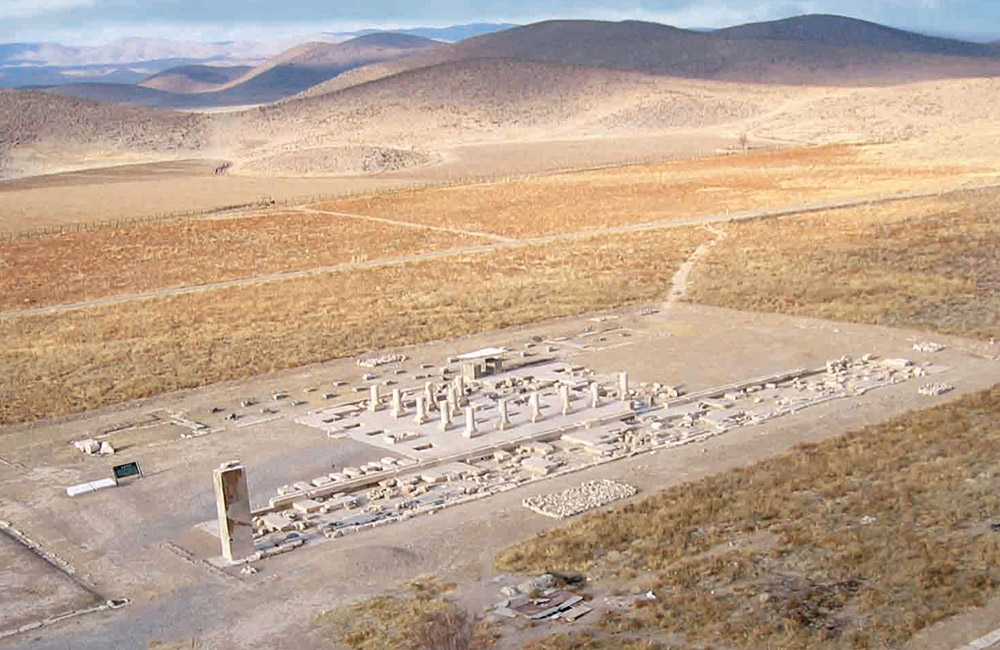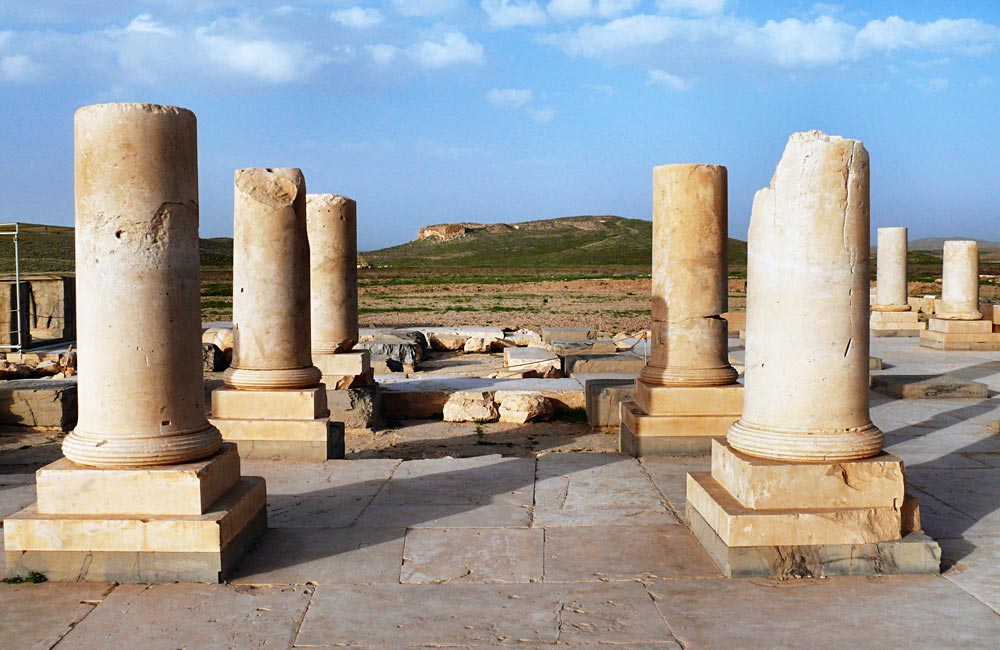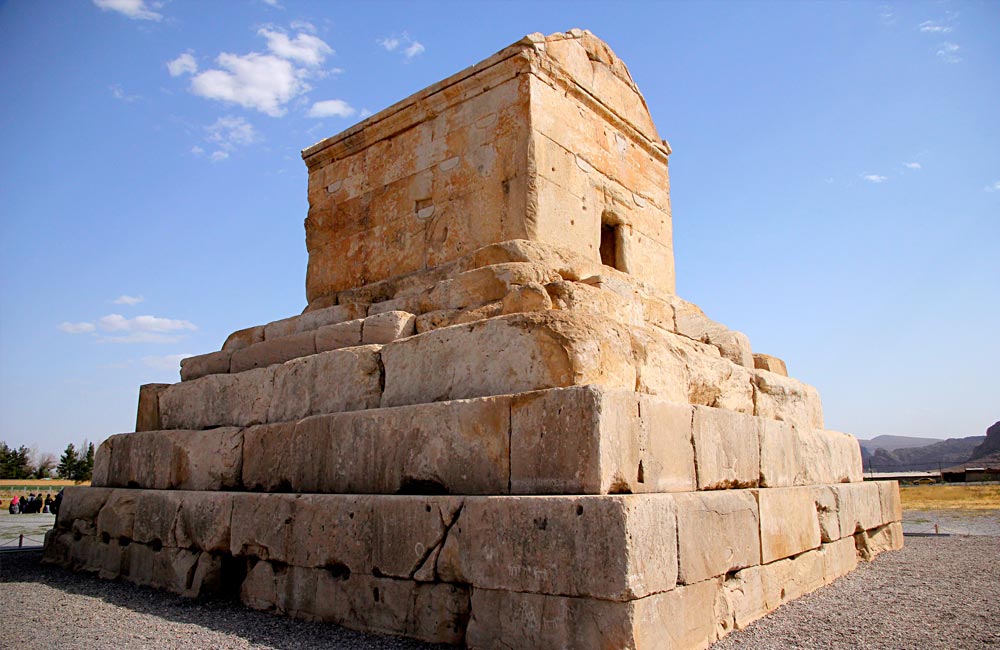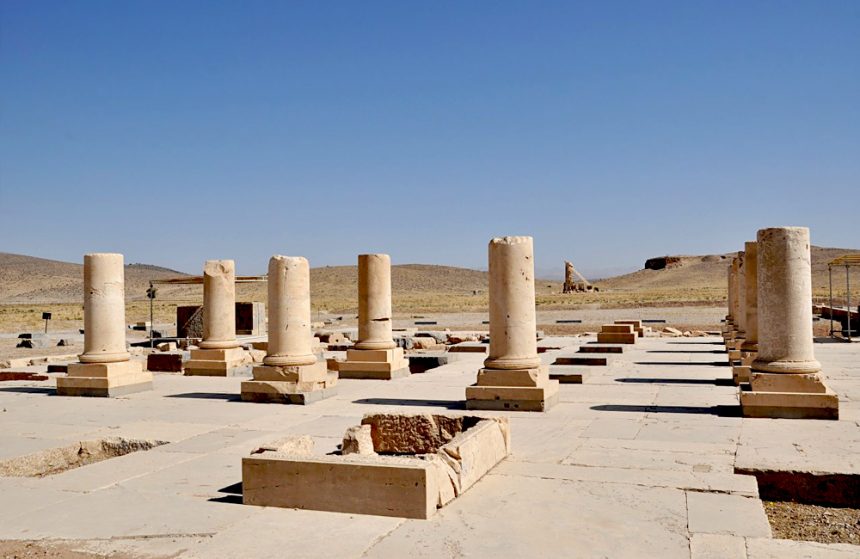Founded by Cyrus II the Great, the mighty ruler of the Achaemenid Empire 6th century BC, the impressive city of Pasargadae was the first dynastic capital of the ancient Persian Empire.
The Achaemenid Empire’s was the first-ever known to respect and maintain the cultural diversity of the people that it conquered. Aside from uncovering its ancient history, tourists and travelers continuously flock from all over the globe to see the city’s unique style of architecture.
This 2,500 year old metropolis in, Shiraz, Iran, has been recognized as an official UNESCO World Heritage Site as of 2004. Come along with goingIRAN to learn and discover more about Iran’s ancient culture and one of its oldest destinations!
Ancient Pasargadae Through Time
Once the seat of a mighty empire, most of this ancient city now remains resting, unexcavated and in ruins.
The wondrous tomb of Cyrus the Great, Tall-e Takht fortress, and the remains of two royal palaces are all that stand in the vast arid landscape.


Ancient records and inscriptions tell us of the initial construction of the vigorous Pasargadae to date back to 546 BC. Taking many years build, it was eventually left unfinished due to the death of Cyrus the Great in battle, in 530 BC.
It remained as the seat of the royal empire until Darius founded the new on in Persepolis.
Footprints of Ancient Cyrus
The city’s uniqueness is attributed to the fact that the Achaemenid rulers embraced cultures rather than forcing reform. Pasargadae is the capital of the vast kingdom that spanned from the Eastern Mediterranean and Egypt all the way to the Hindus River, India.
To its great uniqueness, the design and architectural style of Pasargadae has never been seen prior or after the Achaemenids’ reign. The royal ensemble with the four gardens later became a foundational prototype in Persian and Western Asian architecture.
Aside from the epic remains of the many stone columns, doorways and carvings, one of the most discussed monuments at Pasargadae is the Tomb of Cyrus II. Although there is no firm evidence that it is, indeed, Cyrus’ tomb, there is a tale in Greek history that sheds light onto the truth behind this matter.

Written 2nd century AD in Greek history, it is said that when Alexander the Great raided and destroyed the nearby city of Persepolis, he paid a visit to Cyrus’ tomb.
There, he and his guards entered the tomb where they found a golden bed, a set table, some ornaments embedded with precious stones and a golden coffin along with an inscription etched on the tomb.
Although there is disagreement on the exact wording of the text, Strabo; a Greek historian interprets it to say: “Passer-by, I am Cyrus, who gave the Persians an empire, and was king of Asia. Grudge me not therefore this monument.”
Pasargadae Today
The tomb structure is also said to be the oldest base-isolated structure in the world. To this day, the general setting of Pasargadae and all of its monuments remain in complete authenticity.
No modern reconstructions have ever been made to any structure of the ancient capital. Everything at the site is as it was from the day its original foundation. Enduring the punishment of time and invading colonies, the Persian capital continues to share Iran’s culture with the world!
Recommended Posts | naghsh_e rostam
City/Town: Shiraz
Address: Pasargadae Area, Kurd Shol, Sa’adat Shahr- Safashahr Expwy., Saadat Shahr Town
Operating Days: Everyday
Operating Hours: 8 Am. to 6 Pm.
Neighborhood: Toll-e Takht – Tomb of Cyrus the Great – Pasargadae Museum – Naghsh-e Rostam – Soleiman Prison – Persepolis – Tomb of Cambyses – Naqsh-e Rajab


